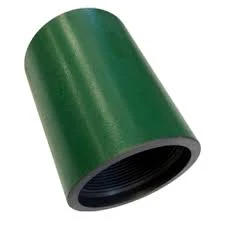- Afrikaans
- Albanian
- Amharic
- Arabic
- Armenian
- Azerbaijani
- Basque
- Belarusian
- Bengali
- Bosnian
- Bulgarian
- Catalan
- Cebuano
- Corsican
- Croatian
- Czech
- Danish
- Dutch
- English
- Esperanto
- Estonian
- Finnish
- French
- Frisian
- Galician
- Georgian
- German
- Greek
- Gujarati
- Haitian Creole
- hausa
- hawaiian
- Hebrew
- Hindi
- Miao
- Hungarian
- Icelandic
- igbo
- Indonesian
- irish
- Italian
- Japanese
- Javanese
- Kannada
- kazakh
- Khmer
- Rwandese
- Korean
- Kurdish
- Kyrgyz
- Lao
- Latin
- Latvian
- Lithuanian
- Luxembourgish
- Macedonian
- Malgashi
- Malay
- Malayalam
- Maltese
- Maori
- Marathi
- Mongolian
- Myanmar
- Nepali
- Norwegian
- Norwegian
- Occitan
- Pashto
- Persian
- Polish
- Portuguese
- Punjabi
- Romanian
- Russian
- Samoan
- Scottish Gaelic
- Serbian
- Sesotho
- Shona
- Sindhi
- Sinhala
- Slovak
- Slovenian
- Somali
- Spanish
- Sundanese
- Swahili
- Swedish
- Tagalog
- Tajik
- Tamil
- Tatar
- Telugu
- Thai
- Turkish
- Turkmen
- Ukrainian
- Urdu
- Uighur
- Uzbek
- Vietnamese
- Welsh
- Bantu
- Yiddish
- Yoruba
- Zulu
metric pipe couplings
Understanding Metric Pipe Couplings A Comprehensive Guide
In the world of plumbing, construction, and various industrial applications, the importance of robust and reliable pipe connections cannot be overstated. Among the numerous components that facilitate these connections, metric pipe couplings hold a vital role. This article delves into the various aspects of metric pipe couplings, including their types, applications, benefits, and installation procedures.
What Are Metric Pipe Couplings?
Metric pipe couplings are fittings designed to join two or more lengths of pipe in a plumbing or piping system. They are specifically made to conform to metric measurements, which are based on the International System of Units (SI). This standardization simplifies the design, manufacture, and maintenance of piping systems globally, specifically in countries that primarily utilize metric measurements.
Types of Metric Pipe Couplings
There are several types of metric pipe couplings, each suited to specific applications
1. Straight Couplings These are the most common type, used for connecting two straight sections of pipe. They ensure a seamless flow of liquids or gases without any obstruction.
2. Reducing Couplings As the name suggests, these couplings transition between pipes of different diameters. They allow for the efficient connection of various pipe sizes, making them essential in systems where diameter changes are necessary.
3. Elbow Couplings These couplings are designed to change the direction of pipe runs. They are available in various angles, typically 45° or 90°, making them flexible for different layout designs.
4. Tee Couplings Tee couplings enable the branching of a pipeline. They have three openings — one for the main line and two for branches — facilitating the distribution of fluids or gases.
5. Cross Couplings Similar to tee couplings, cross couplings allow the connection of four pipe branches at right angles. They are often used in more complex piping installations.
Applications of Metric Pipe Couplings
Metric pipe couplings are used across various industries, including
- Plumbing They are fundamental in residential and commercial water supply systems, ensuring reliable connections between pipes. - Oil and Gas Couplings are essential in transporting liquids and gases safely and efficiently. - Construction In HVAC systems and fire protection installations, metric pipe couplings play a key role in maintaining proper airflow and fluid transport.
- Manufacturing Various industrial machinery requires precise pipe connections, which are achieved through the use of metric couplings.
metric pipe couplings

Benefits of Using Metric Pipe Couplings
1. Standardization The universal metric system simplifies communication and reduces the risk of mistakes that can occur due to unit conversions. This is particularly beneficial in international projects.
2. Durability Metric pipe couplings are often manufactured from high-quality materials such as stainless steel, brass, or durable plastics, providing long-lasting performance under various environmental conditions.
3. Ease of Installation Many metric couplings are designed for quick and easy installation, requiring minimal tools and expertise. This reduces labor costs and installation time.
4. Leak Prevention Properly designed and installed metric couplings create secure seals that prevent leaks, thus protecting the integrity of the entire piping system.
5. Versatility With a wide range of sizes and types available, metric pipe couplings can be used in virtually any piping application, accommodating various materials and fluid types.
Installation Considerations
While installing metric pipe couplings is generally straightforward, there are several considerations to ensure optimal performance
- Correct Sizing Always select couplings that match the diameter and type of pipe being used.
- Proper Alignment Pipes should be adequately aligned before securing the coupling to avoid undue stress on the joints.
- Torque Specifications When using threaded couplings, ensure that you adhere to the manufacturer's torque specifications to prevent damage.
- Regular Inspections After installation, periodic inspections should be conducted to check for leaks or signs of wear and tear.
Conclusion
In conclusion, metric pipe couplings are essential components in a myriad of piping systems. Their standardization, durability, and versatility make them indispensable in various sectors, from plumbing to industry. By understanding the different types, applications, and installation techniques associated with metric pipe couplings, professionals can ensure that their piping systems remain efficient and reliable. Whether you are a seasoned plumber or a novice DIYer, familiarity with these couplings can greatly enhance the success of your projects.
-
Tubing Pup Joints: Essential Components for Oil and Gas OperationsNewsJul.10,2025
-
Pup Joints: Essential Components for Reliable Drilling OperationsNewsJul.10,2025
-
Pipe Couplings: Connecting Your World EfficientlyNewsJul.10,2025
-
Mastering Oilfield Operations with Quality Tubing and CasingNewsJul.10,2025
-
High-Quality Casing Couplings for Every NeedNewsJul.10,2025
-
Boost Your Drilling Efficiency with Premium Crossover Tools & Seating NipplesNewsJul.10,2025







